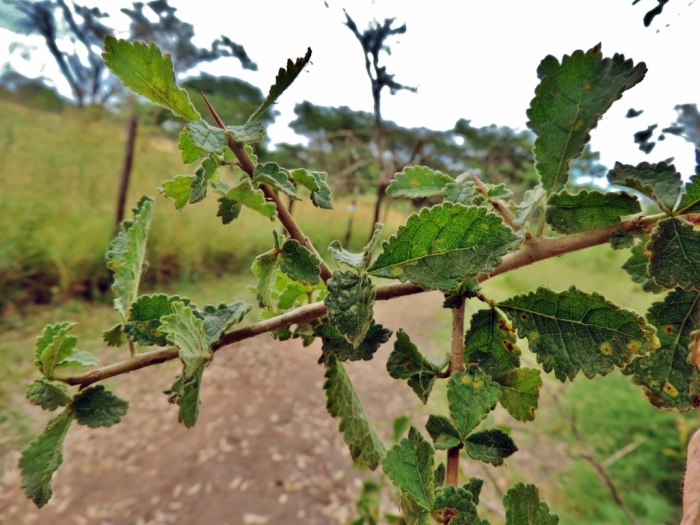African Myrrh
(Commiphora africana)
African Myrrh (Commiphora africana)
/
/

i_c_riddell
CC BY 4.0
Image By:
i_c_riddell
Recorded By:
Copyright:
CC BY 4.0
Copyright Notice:
Photo by: i_c_riddell | License Type: CC BY 4.0 | License URL: http://creativecommons.org/licenses/by/4.0/ | Rights Holder: i_c_riddell | Publisher: iNaturalist | Date Created: 2022-04-06T08:24:51-07:00 |

























Estimated Native Range
Summary
Commiphora africana, commonly known as African myrrh, is a small deciduous tree or shrub native to the arid savannas and open woodlands of sub-Saharan Africa, found in countries such as Angola, Botswana, and Ethiopia. It typically grows up to 16 feet (5 meters) tall and is characterized by its branchlets that end in sharp spines and distinctive grey-green peeling bark, which is reminiscent of paper. The trifoliate leaves have toothed margins and release a pleasant aroma when crushed. African myrrh produces small, inconspicuous yellowish flowers, followed by reddish fruits that split open to reveal a single black seed. The fruits and sweet roots are edible, and the leaves are a source of forage for camels and goats in its native habitat.
In cultivation, African myrrh is valued for its drought tolerance and unique peeling bark, which adds textural interest to the landscape. It is often used as a live fence in its native range due to its spiny branches, which deter animals. This species prefers full sun and can thrive in a variety of soil types, provided they are well-drained. It requires minimal water once established, making it suitable for xeriscaping. Gardeners should be aware that it may not tolerate frost and should be protected in cooler climates. While not commonly grown in gardens outside its native range, it has potential for use in dry, warm climates as an ornamental or barrier plant.CC BY-SA 4.0
In cultivation, African myrrh is valued for its drought tolerance and unique peeling bark, which adds textural interest to the landscape. It is often used as a live fence in its native range due to its spiny branches, which deter animals. This species prefers full sun and can thrive in a variety of soil types, provided they are well-drained. It requires minimal water once established, making it suitable for xeriscaping. Gardeners should be aware that it may not tolerate frost and should be protected in cooler climates. While not commonly grown in gardens outside its native range, it has potential for use in dry, warm climates as an ornamental or barrier plant.CC BY-SA 4.0
Plant Description
- Plant Type: Tree, Shrub
- Height: 6-9 feet
- Width: 4-6 feet
- Growth Rate: Moderate
- Flower Color: Green
- Flowering Season: Spring, Summer
- Leaf Retention: Deciduous
Growth Requirements
- Sun: Full Sun
- Water: Low
- Drainage: Medium, Fast
Common Uses
Drought Tolerant, Fragrant, Low Maintenance
Natural Habitat
Native to arid savannas and open woodlands of sub-Saharan Africa
Other Names
Common Names: Gum tree, African bdellium-tree
Scientific Names: , Commiphora africana, Balsamea africana, Balsamea kotschyi, Balsamea pilosa, Balsamodendrum africanum, Balsamodendrum africanum subsp. ramosissimum, Balsamodendrum africanum var. ramosissimum, Balsamodendrum kotschyi, Bdellium africanum
GBIF Accepted Name: